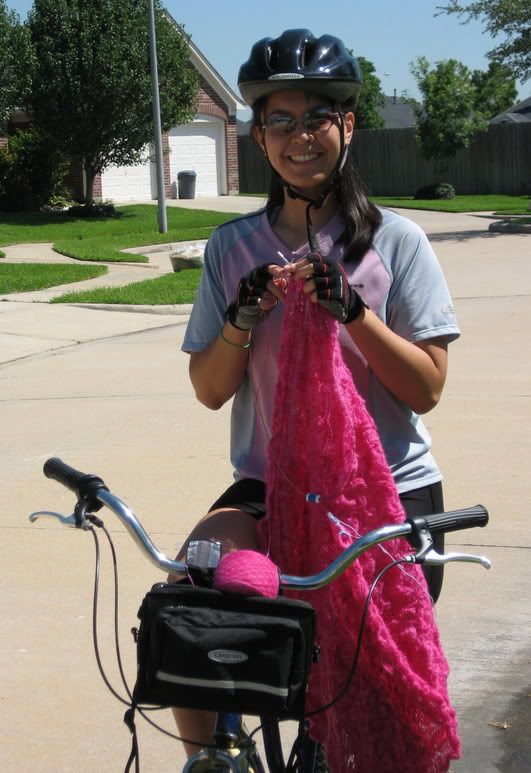 Inspired Cable Knits
Inspired Cable Knits is the first book by designer
Fiona Ellis. The designs in the book are contemporary in style, so if you are looking for a book that has traditional Aran sweaters, this is not the book for you. In fact, many of the designs show off Ellis’s talent in showcasing cables in unique and unexpected ways. The cable patterns she uses often have long repeats, undulate and travel, and appear somewhat asymmetrical. Sometimes she beautifully morphs one cable pattern into a different one. Ellis also expertly combines cables with lace work, knit and purl texture, or Fair-isle knitting in several designs.
Possibly the best feature of the book is the fact that all cable patterns are shown as a chart and written out as line-by-line directions. I personally will never read the directions, but I have know that there are knitters who dislike charts as much as I dislike written directions for cables and lace. The charts are large and clear and would not need to be enlarged for ease in reading. However, the charts are printed in a light green ink that I suspect will not photocopy very easily. (I always photocopy the patterns that I work so that I can write on the pattern without defacing my book or magazine.) In addition, the two Fair-isle charts are printed in the same green ink and use varying degrees of shading to distinguish between the colors. I’m sure that this monochromatic printing makes the pages attractive, but please! It’s a color-work chart! Use colors!
For the most part, the photography in the book is excellent. It has clear, well-lighted photos of the designs and includes at least one nice detailed shot of the cable pattern used in each piece. There are also several gorgeous nature photos that show where Ellis got her inspiration for the designs. Unfortunately, a couple of the more interesting sweaters are not well photographed. In the description of what I think may be the best men’s sweater in the book, Ellis says, “The cable used in the center panels is asymmetrical, leaving areas of reverse stockinette stitch. This allows each cable to infringe on its neighbor, making it difficult to see the vertical breaks.” Sounds intriguing, right? Sadly, you will not see a clear photograph of this cable pattern anywhere in the book.
At the beginning of each pattern, Ellis describes her inspiration for the design and briefly describes the design itself. I enjoy reading these descriptions even though I found some of the supposed inspirations a bit flaky. At the end of each pattern is what Ellis calls a
mindfulness pointer. These pointers are supposed to give you something to think about while you are knitting. The value of these pointers will probably depend on the attitude and mood of the person reading them. They can come off as thought provoking and interesting or pretentious and silly.
The one significant flaw of this book is the omission of yardage information for the yarns used. While some people are comfortable making yarn substitutions by using only the weight of the yarn, I like to calculate the yardage needed and purchase yarn based on that calculation. Thankfully, Ellis has responded to this complaint by giving more
detailed yarn information on her website. She also gives substitution suggestions of a discontinued yarn.
Overall, I think this is a wonderful book with many beautiful and elegant designs. I’m not certain that it will appeal to everyone, but if you love cables you must have this book. More cables, please!
The Knitty Gritty:144 pages, including index
11 women’s sweaters (1 sleeveless)
3 men’s sweaters
2 baby/toddler sweater
5 accessories, including a yoga mat bag and a pillow cover
Photos of some of the projects can be seen
here. (Click "View Inside Pages")















